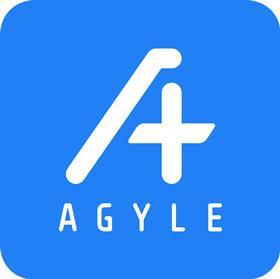In partnership with Agyle, Dorset County Hospital’s digital patient record strategy committed to ensuring that improving the user experience was at the heart of its approach
A challenging context
Innovation in Healthcare Technology is entering an exciting new phase. Given the scope and pace of these developments, the statistics for technology adoption and readiness across the NHS demonstrate the scale of both the challenge and the opportunity.
Sponsored by
Of 213 acute NHS trusts, 173 do not meet digital maturity standards, while 45 have no electronic health record at all. That means, astoundingly, more than 80 per cent of trusts are yet to maximise the opportunities to improve patient safety and outcomes that effective digitisation can bring.
A transformative vision for DCH
When Dorset County Hospital started its electronic patient record journey six years ago, it faced many of the same challenges shared by trusts throughout the NHS. Funding was limited, there were multiple clinical systems already in place, and the emergent nature of healthcare processes and policies meant that any solutions they implemented had to meet the challenges of today and of the future. Fortunately, DCH had three key things working in their favour:
- Clear short, medium, and long-term strategic plans for digital transformation
- Innovative and ambitious leadership, management and clinical teams; and
- Like-minded technology partners
DCH’s digital patient record strategy outlined a vision for a modular digital landscape constructed around a service orientated architecture. Their objective was for clinicians to access a decreasing number of systems, designed around clinical processes, with data flowing seamlessly between those systems. The strategy was also committed to ensuring that improving the user experience was at the heart of its approach.
Agyle’s journey to deliver better data
The Agyle team shared this vision with DCH. Agyle has been on the digital transformation journey with the NHS for more than 15 years, with Agyle’s document management system the first step along this journey. User-led design ensured a single interface to access all patient documentation in a timeline view – an industry first. This transformed trusts’ ability to store and review patient information intuitively in one place.
The next phase in Agyle’s evolution centred around the intuitive and intelligent collection and presentation of clinical information across even the most complex clinical environments. The journey started more than eight years ago, co-designed with clinicians in the NHS. Agyle grew from a simple ward view to a full EPR, enabling point-of care data collecting, real-time operational performance management and the introduction of a new approach to clinical documentation which creates holistic, multi-disciplinary clinical records through proactive information saving. The result is a solution that provides functionality ranging from enabling paper-light emergency departments to advanced discharging features. The solution empowered an NHS trust in their successful pursuit of HIMSS level 5.
A new era for DCH ED
“Agyle speeds things up by bringing information together in one place, so staff in the ED can access and update information immediately. It also makes it quicker and easier to share information with other departments or healthcare providers”, said Spencer Cheung, consultant in emergency medicine at DCH.
The past year has seen Agyle evolve enormously. Through intensive collaboration with DCH and other trusts, Agyle now facilitates transformed clinical workflows, optimises clinical safety and efficiency, and embraces the latest technology and information standards.
Agyle went live in the DCH ED in April 2022, with the department seeing benefits almost immediately. Agyle has helped DCH tackle some of the biggest operational and patient flow challenges, including ambulance handover management, real-time KPI reporting, and trust-wide visibility of ED activity and patient acuity. This has been achieved while also improving the clinician experience and creating more efficient clinical and operational processes.
An exceptional set of benefits
- Rapid and flexible deployment - Agyle can successfully be deployed in a matter of months, versus years
- Interoperability and regional working - effective clinical information sharing between clinical systems, across a trust and even region-wide
- Improved clinical safety - Agyle provides secure access to timely and consistent clinical documentation, supported by robust clinical governance practices
- Cost-effective, modular approach - trusts can select the modules that meet their needs, add-in bespoke additional development, and maintain their preferred deployment approach
- Increased time for patient care - by improving visibility and clinical processes, facilitating patient flow and reducing time spent on computer systems
- Easy to learn and train - the intuitive platform makes training extremely efficient
- Future proofed - built on the Fusion AI Cadence engine, Agyle is geared to support proactive prevention and intelligent care provision. Agyle takes the approach of truly partnering with customers to co-develop the solution, supporting them on their own unique digital transformation journey
With an exciting new look and feel, enhanced functionality and even more tailoring towards the NHS, Agyle clearly distinguishes itself from its competitors. Agyle is built for the cloud, on an AI platform, and with a mobile-first design.
A compelling proposition for DCH and the NHS
The partnership between DCH and Agyle represents a model example for the NHS. Having faced challenges that are all too familiar across NHS trusts, the DCH journey proves that advanced digital maturity, technological innovation, and user co-design is within reach of all NHS trusts. Having successfully deployed in the ED department, inpatient functionality is the next exciting challenge that awaits.
Agyle is an intelligent, intuitive, and cost-effective system designed to deliver outcomes rapidly and cost effectively for the NHS and its users. There is much more to come but there is already a compelling story to tell. One that might just offer some insight and hope for other trusts on transformation journeys of their own.























